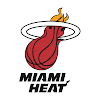Wal-Mart is a global discount retailer headquartered in Bentonville, a small city in Arkansas, USA. Wal-Mart is the largest public corporation by revenue, it is one of the biggest retailers in the world and its stock is traded in several international stock exchanges. Sam’s Club and Marketside stores are operating divisions of Wal-Mart corporation. In some international markets Wal-Mart stores trade under local names like ASDA in the UK, Bompreço in Brazil, Mi Bodega or Superama in Mexico and Seiyu in Japan.
The history of Wal-Mart is like a curriculum vitae for the corporate founder Sam Walton who started his discount store named Walton’s Five and Dime in 1950. Previously Walton had operated a Ben Franklin store in Newport, Arkansas that he franchised from 1944 until 1950 but afterwards relocated to Bentonville, Arkansas in 1950. He continued his association with Ben Franklin but renamed the store as Walton’s Five and Dime.
Walton owned a small network of Walton’s Five and Dime stores by the late 1950s. They had come to realize that successful discount retailing didn’t just involve getting the best price from suppliers but also meant passing those savings onto customers. Walton’s method basically contrasted with his competition yet the higher volumes sold in Walton’s stores were evidence that he had found a model that would encourage his company to earn greater profits.
Sam Walton owned 11 stores by 1962. Walton and his wife Helen took a huge gamble and reinvested everything they could spare into a new store at Rogers, Arkansas which became the very first Wal-Mart branded store. Their concept was an immediate success leading to spectacular growth of the brand and 24 stores by 1967. In 1969 Sam Walton incorporated the stores as Wal-Mart Stores Inc. and in 1972 the company listed on the New York Stock Exchange and provided a cash injection allowing the company to expand to 125 stores by 1975 and then expand to 276 stores in 1980.
Incorporation was also good for Wal-Mart employees and many were given stock options in return for loyalty to the company. In 1970 Sam Walton started selling shares in his company over the counter to customers. Wal-Mart stock was worth $47 by 1971, it was not enough to make millionaires of Walton’s associates and customers but by 1982 increasing to a staggering $49,875 per share which was enough to pay for college education of the kids. This was an ambition that many of Wal-Mart’s employees were claimed to have held.
Wal-Mart has been conservative in respect of acquisitions with most company expansion coming from new growth. In fact Wal-Mart acquisitions have always been strategic in nature such as the first two takeovers of buying the Mohr Value Stores and Hutcheson Shoe Company in 1977, then in 1981 buying Kuhn’s Big K Stores. It would be another 9 years until Wal-Mart would make another acquisition and this time purchasing The McLane Company.
The internal growth of Wal-Mart has largely come from the group’s many Wal-Mart stores but in 1983 the group opened the first Sam’s Club. This was a membership based discount retailer of bulk goods and the customer reaction to Sam’s Club was initially quite reserved in spite of lower prices, with accusations regarding the suspicious plan to build a database of small business owners who were the primary market for the new brand. Despite the criticism, an aggressive expansion program has seen the brand grow to over 700 outlets although from 2006 Sam’s Club is no longer targeting small business.
Sam Walton remained with the company throughout his life visiting stores and meeting employees even walking around the store with them as they completed their tasks. Walton promised to do the hula wearing a hula skirt outside the NYSE on Wall Street as a gesture of solidarity with employees if the company made a pre-tax profit of 8%. Nobody is sure if the company was already projecting a profit of 8% which would have made Walton’s gesture a simple publicity stunt. Anyway, the determined employees got behind the goal and made it a reality. Sam Walton was presented with the Medal of Freedom in 1992, it was the highest US civilian honor for services to American retail by President Bush Sr. only a few weeks before he passed away. In 1998 Walton was listed in the Time Magazine as one of the 100 most influential people of the 20th century.
After Walton’s death, Wal-Mart experienced several months of negative publicity as speculation mounted that his death and the appointment of his oldest son S. Robson Walton as chairman and a lack of clear direction while the change would result in poor performance. The institutional shareholders played a wait and see game and Wal-Mart’s share price plunged but the uncertainty was short lived and had rebounded by the end of 1992. Wal-Mart had become the first retail company in history pass the $100 billion mark and reported sales of $118 billion by the turn of the century.
Sales and profits continued to climb for Wal-Mart through the early 21st century with no sign of any bad affect from the weakening global economy. The employee groups claim this is due to Wal-Mart’s policy of forcing off-the-clock work to registered employees who claim they are given too much work for their shift and told by management that overtime pay is out of the question. A number of class action suits were brought against Wal-Mart which the company had vigorously defended and lost in many cases. Employee unions are severely restricted from operating within Wal-Mart so the full extent of the claims may never be known but by 2004 Wal-Mart had been ordered to pay fines and repay wages which exceeded $300 million.
Wal-Mart owned 6,775 stores worldwide at the end of 2006, it had over 2 million employees and generated nearly $350 billion of annual sales.
Source: www.bighistory.net
Wal-Mart Company History
Saturday, January 29, 2011
Subscribe to:
Post Comments (Atom)















































0 comments:
Post a Comment